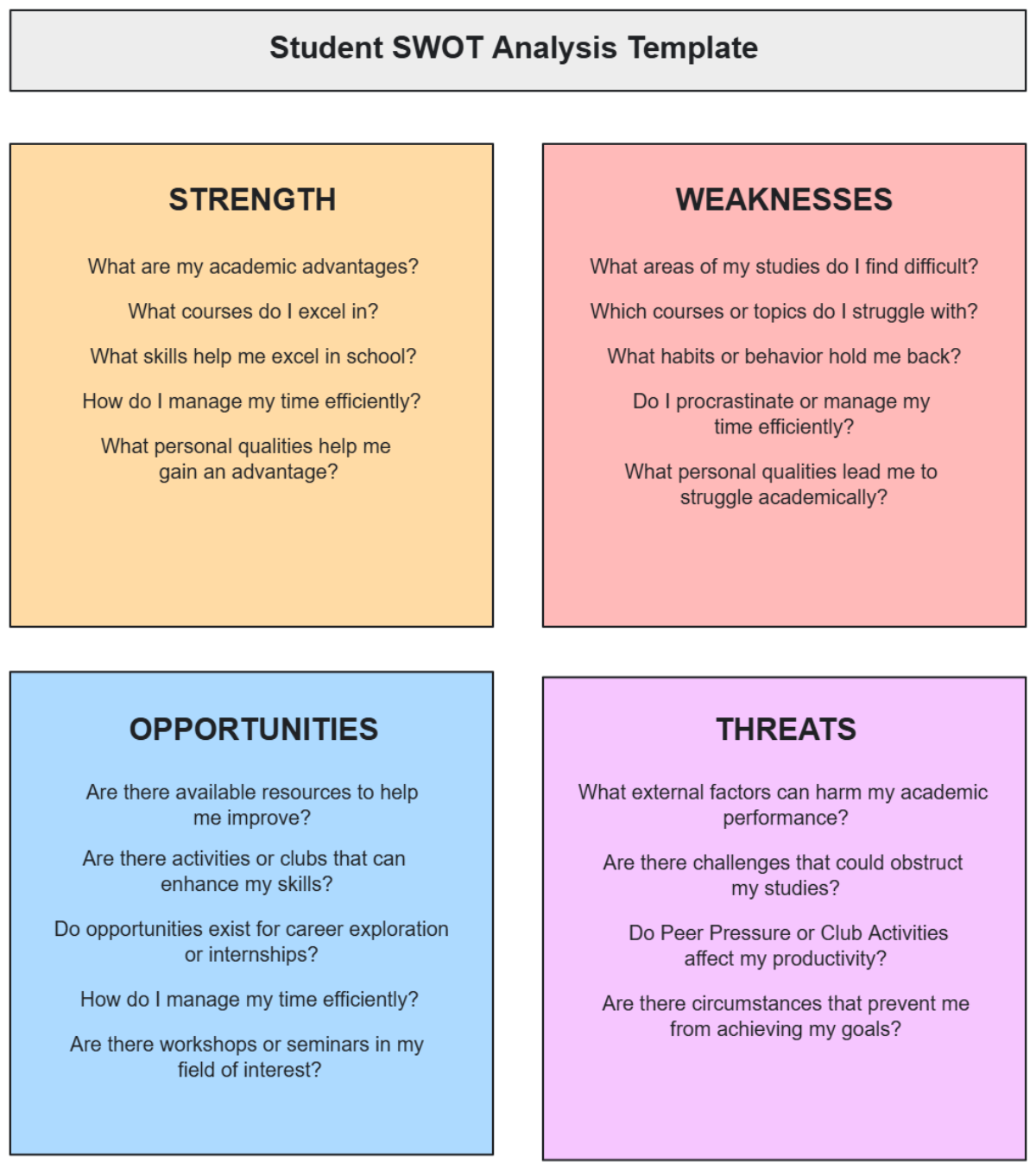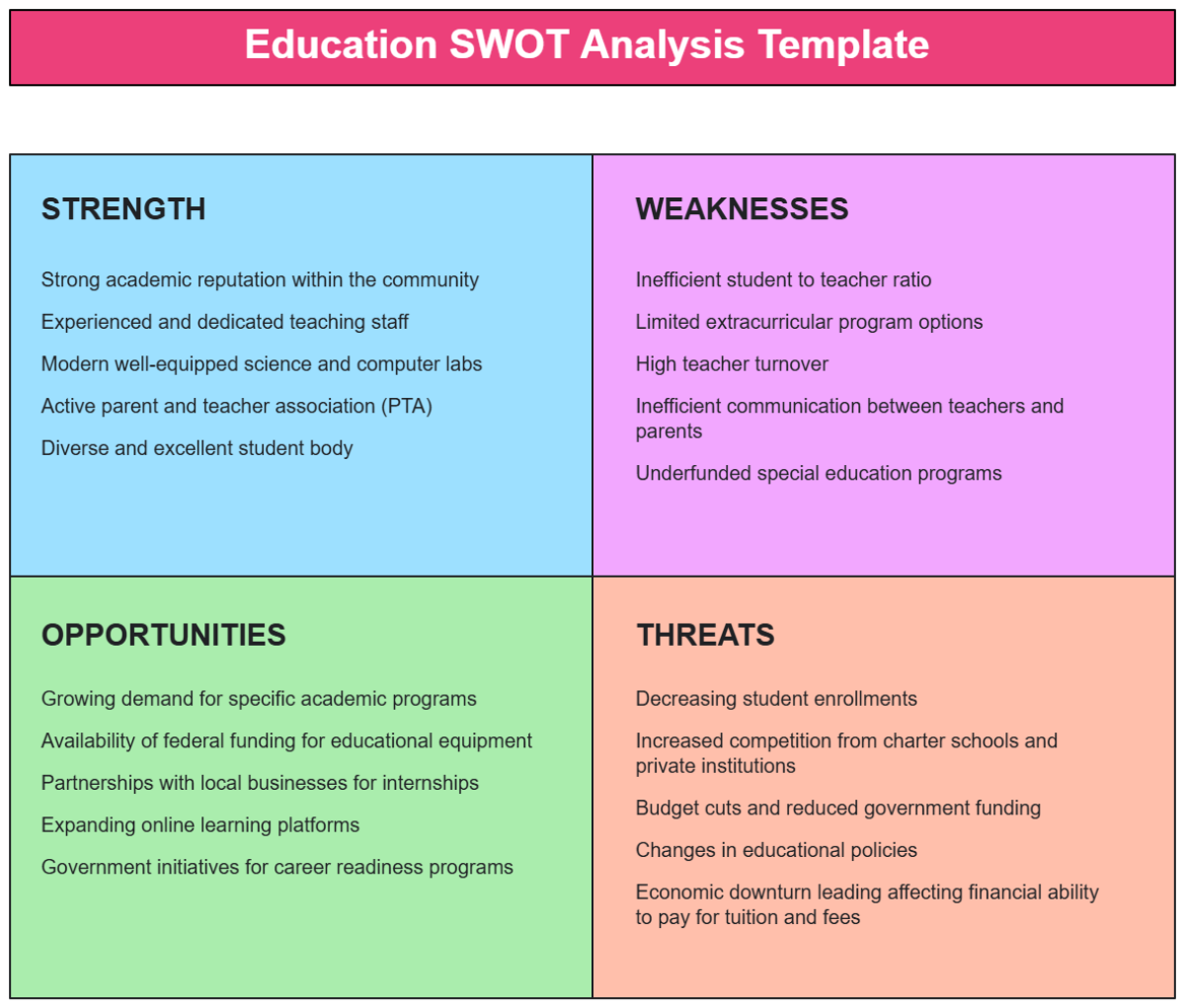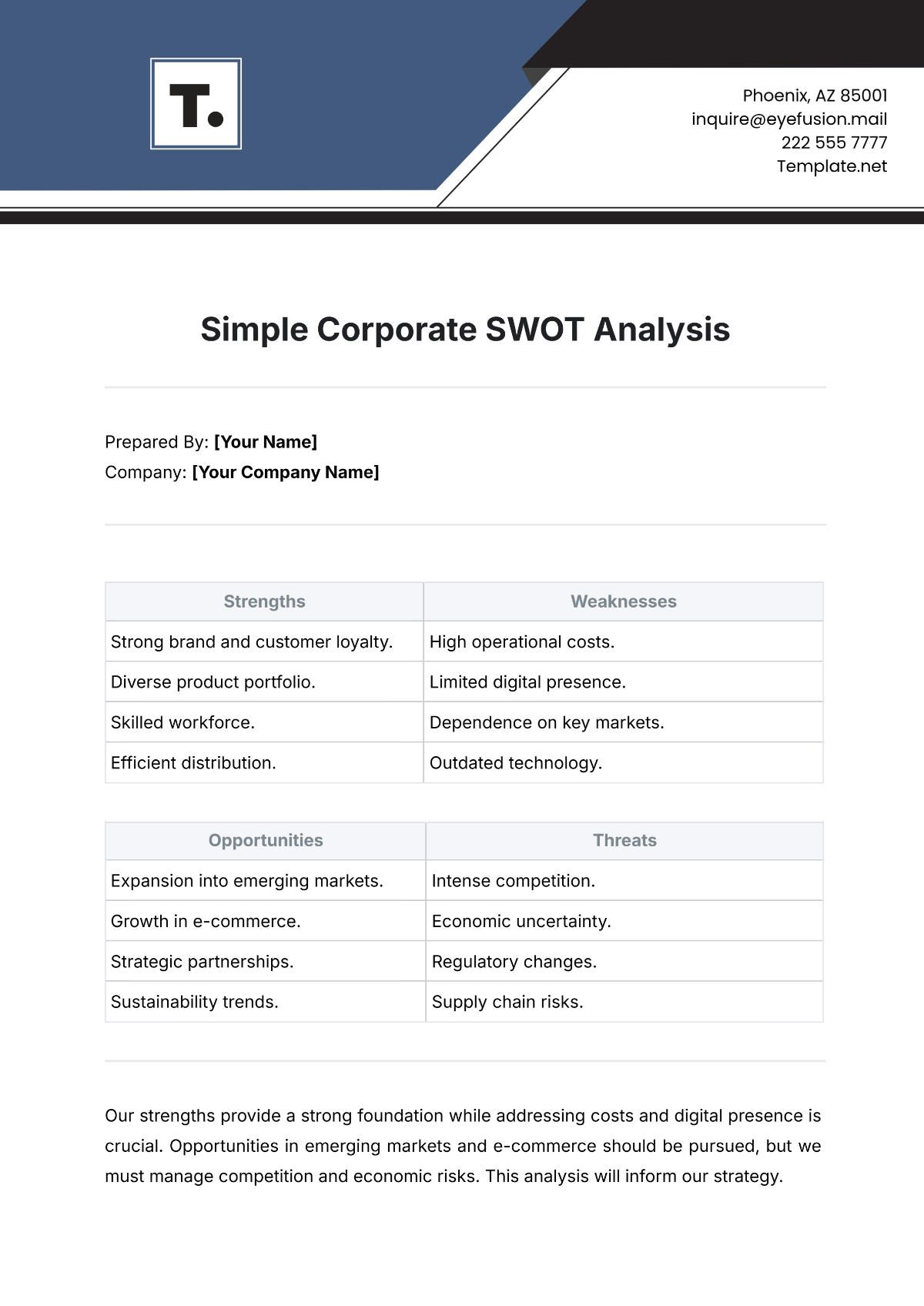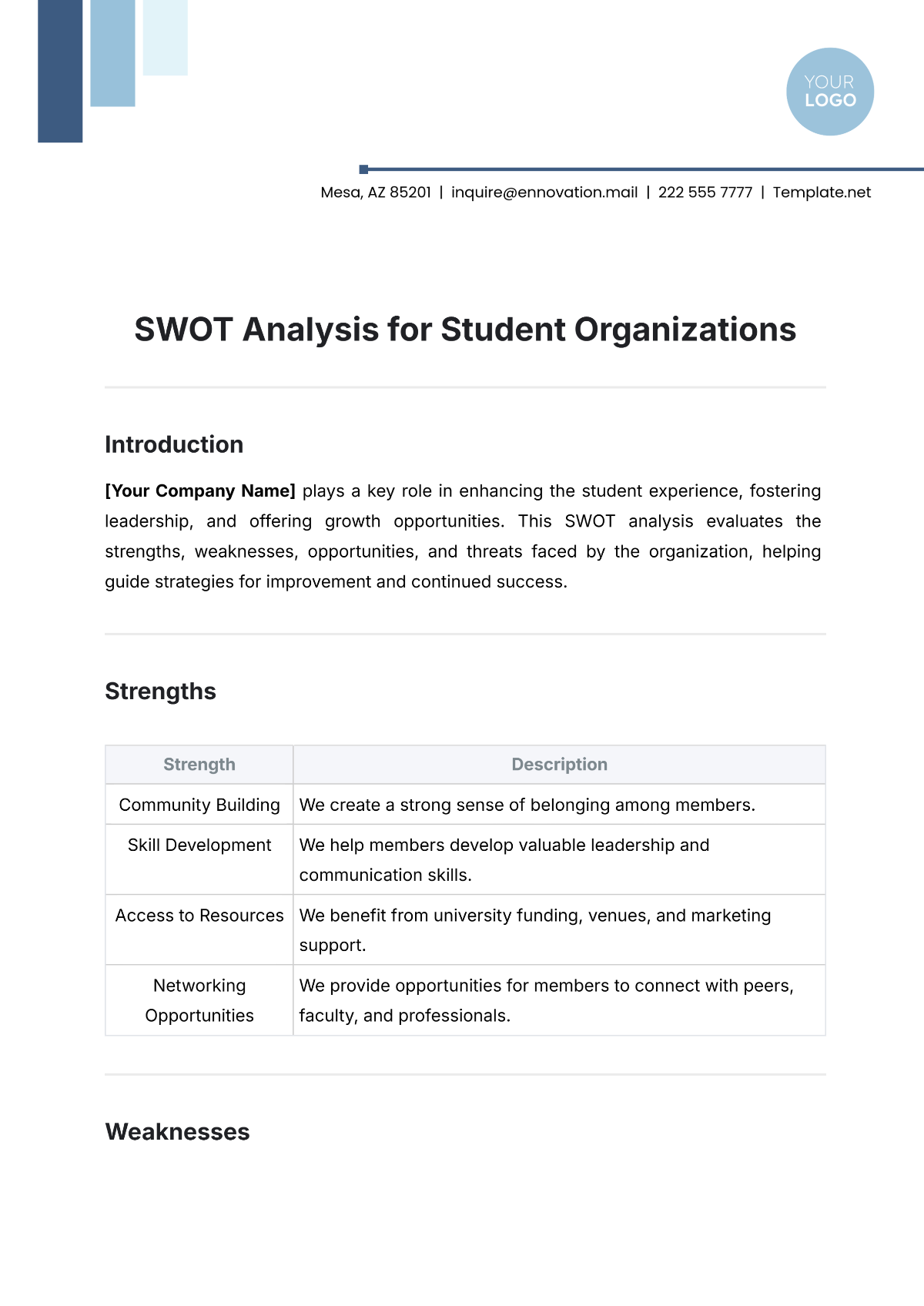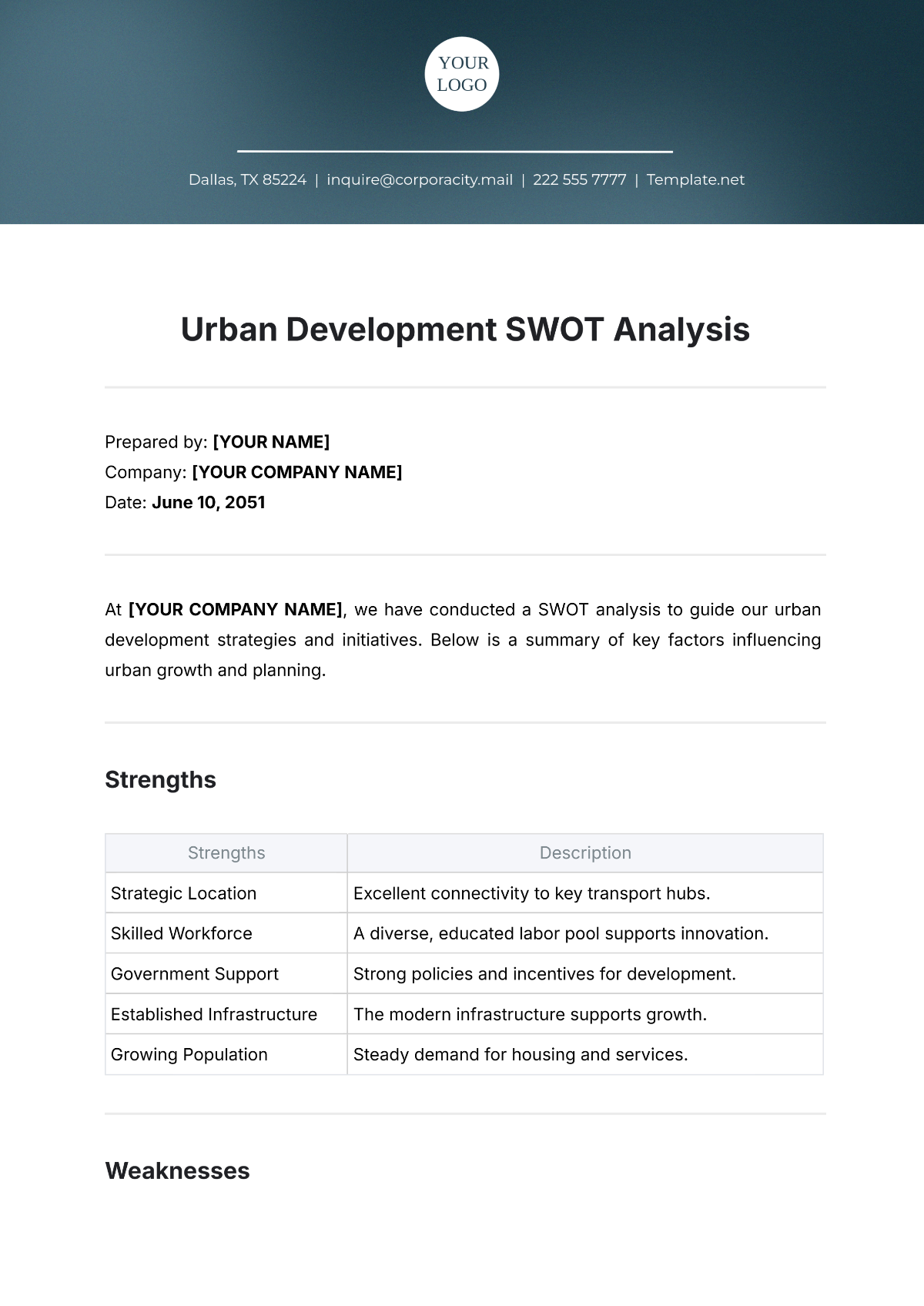Sales SWOT Analysis of Current Commission and Incentive Structures
I. Introduction
In [20xx], [Your Company Name] has a well-established Sales Commission and Incentive Structure in place. This structure is crucial for motivating the sales team, driving revenue, and ensuring the alignment of sales activities with organizational objectives. However, to ensure continued success, it is essential to analyze the current state of the commission and incentive plans using a SWOT analysis.
II. Strengths
A. Competitive Compensation Packages
One of the key strengths of [Your Company Name]'s sales compensation structure is its competitive compensation packages. The company recognizes that attracting and retaining top-tier sales talent is essential for its continued growth. To achieve this, the company offers its sales representatives not only a competitive base salary but also enticing commission structures that reward high performers.
This compensation structure aligns with the market standards, ensuring that salespeople are motivated and adequately rewarded for their efforts. It fosters a sense of achievement and security, as the earning potential is substantial, especially for high-performing sales representatives. This strength aids in maintaining a high level of employee satisfaction and engagement within the sales team.
B. Transparency
Transparency in the commission and incentive structure is another significant strength. The clarity and openness of the system ensure that sales representatives have a clear understanding of how their compensation is calculated. The breakdown of components, metrics, and the performance required to earn bonuses or commissions is readily accessible. This transparency builds trust within the sales team, as they can see the direct correlation between their efforts and rewards. This fosters a sense of fairness and motivates sales representatives to meet and exceed their targets.
C. Customization
The company introduced a customization feature in its commission and incentive structure. Sales representatives have the flexibility to choose the plan that aligns best with their strengths and preferences. This level of personalization empowers individuals to take ownership of their earning potential.
Sales representatives who excel in building long-term relationships may opt for a plan that offers higher commissions for customer retention, while those who thrive on closing deals may choose a structure that rewards short-term sales performance. This customization enhances morale, as individuals feel more in control of their earning potential, leading to increased motivation and productivity.
D. Regular Performance Assessment
To maintain high performance standards, the company conducts regular performance assessments. These assessments provide timely feedback to sales representatives, allowing them to track their progress and understand how to improve. The company utilizes key performance indicators (KPIs), such as conversion rates, revenue generated, and customer satisfaction scores, to measure individual and team performance.
This feedback loop not only identifies areas for improvement but also recognizes and rewards high achievers. Sales representatives appreciate the consistent communication and recognition of their hard work, which encourages continuous improvement and drives them to meet their targets.
III. Weaknesses
A. Complexity
Despite the strengths of the company's commission and incentive structure, it is not without its weaknesses. The primary concern is the high level of complexity within the system. The commission structure has evolved into a convoluted combination of multiple components and calculations, including base salary, commissions, bonuses, and stock options.
The complexity poses challenges for sales representatives in understanding how their compensation is computed. This complexity can lead to frustration and confusion, as many find it challenging to navigate the intricate details of the plan. This weakness can hinder motivation and reduce overall job satisfaction among sales representatives.
B. Lack of Long-Term Incentives
While short-term incentives are strong, the company's current structure lacks comprehensive long-term incentives. These incentives could include retirement plans, pension contributions, and more extensive stock option packages. This absence of long-term security may result in decreased employee loyalty and retention.
To address this weakness, the company must consider how to provide sales representatives with financial security and stability beyond their immediate earnings. Long-term incentives can encourage employees to stay with the company and be more invested in its long-term success.
C. Subjectivity
The performance assessment system occasionally exhibits subjectivity. Despite having well-defined KPIs, certain aspects of performance evaluation may rely on managers' subjective judgments. This subjectivity can lead to disputes and a lack of trust among the sales team, as sales representatives may question the fairness of the assessment process.
Addressing subjectivity is crucial to ensuring that sales representatives feel their performance is evaluated fairly and equitably. Implementing objective performance metrics and ensuring consistent assessment criteria will help mitigate this weakness and promote a sense of trust and transparency.
D. High Administrative Burden
The current commission and incentive structure imposes a significant administrative burden on the company. Calculating and managing individual incentives, commissions, and bonuses is labor-intensive and time-consuming. The manual nature of this process can lead to delays in payments and errors in calculations.
To address this weakness, the company should explore opportunities to automate and streamline the administrative processes. Leveraging technology, such as advanced commission calculation software and analytics, can enhance accuracy, reduce administrative overhead, and improve efficiency.
IV. Opportunities
A. Technology Integration
One of the most promising opportunities for the Company's commission and incentive structure is the integration of advanced technology. Leveraging artificial intelligence (AI), data analytics, and commission calculation software can simplify and automate the compensation process. By introducing intelligent algorithms, the company can ensure more accurate calculations and eliminate errors caused by manual input.
This technology integration not only reduces administrative burdens but also allows for real-time performance tracking and data-driven decision-making. Furthermore, it provides valuable insights into the effectiveness of the commission and incentive structures, enabling continuous optimization.
B. Long-Term Incentives
Introducing long-term incentives is another significant opportunity. The absence of retirement plans and comprehensive stock options is a weakness that can be turned into a strength. By developing robust long-term incentives, such as retirement contributions, pension plans, and extended stock options, the Company can promote employee loyalty and provide a sense of financial security.
These long-term incentives encourage sales representatives to stay with the company for extended periods, contributing to employee retention and a deeper commitment to the organization's long-term success.
C. Skill Development
Investing in skill development programs is a strategic opportunity to enhance the capabilities of the sales team. The company can offer regular training and professional development opportunities to equip sales representatives with the skills needed to excel in their roles.
By nurturing skills such as negotiation, product knowledge, and relationship-building, the company can enable sales representatives to achieve their targets more effectively. This not only benefits individual performance but also contributes to the company's overall success.
D. Market Expansion
As the company explores new markets and territories, it must adapt its commission and incentive plans to align with regional variations and market demands. This adaptability presents an opportunity to customize commission structures for different markets while ensuring that sales representatives remain motivated to achieve objectives in diverse settings.
Understanding the unique challenges and opportunities of each market and tailoring incentive structures accordingly can drive growth in these areas, further expanding the company's reach and revenue.
V. Threats
A. Competitor Compensation
One of the most pressing threats is the compensation offered by rival companies. Competitors may offer more attractive commission and incentive packages, luring top sales talent away from the Company. Talent poaching and attrition can disrupt the company's sales team, affecting productivity and revenue.
To address this threat, the company must continuously monitor market trends and competitor compensation packages, ensuring that their offerings remain competitive and appealing to high-performing sales representatives.
B. Legal and Regulatory Changes
Changes in labor laws and regulations can pose a significant threat to the company's commission structures. Legal and regulatory alterations may impact the company's ability to operate its existing compensation plans. Non-compliance with new regulations can result in legal issues and increased costs.
To mitigate this threat, the company should maintain a proactive approach to monitor and adapt its compensation structures in response to evolving legal and regulatory landscapes. Legal counsel and compliance experts should be engaged to ensure that the company remains aligned with applicable laws.
C. Economic Fluctuations
Economic downturns can negatively affect sales and, subsequently, commission earnings for sales representatives. Economic instability can lead to decreased motivation and performance as sales targets become more challenging to achieve. It is essential to consider this potential threat to employee morale and earnings.
To address this threat, the company can implement contingency plans and safety nets for sales representatives during economic downturns. This may include temporary adjustments to commission structures or offering financial support to ensure that employees can weather economic hardships.
D. Employee Dissatisfaction
Employee dissatisfaction stemming from existing weaknesses, such as complexity, subjectivity, and the absence of long-term incentives, is a persistent threat. It can lead to decreased employee morale, productivity, and engagement. Disgruntled employees may seek opportunities elsewhere, contributing to attrition.
To counteract this threat, the company should focus on addressing the weaknesses identified in the SWOT analysis. Implementing improvements and communicating these changes transparently can help boost employee satisfaction and motivation, reducing the risk of attrition.
VI. Recommendations
The following recommendations should guide the company's efforts to optimize its commission and incentive structures for the next year:
Recommendations | Details |
|---|---|
Simplify the Structure | Streamline the commission structure to make it more understandable for sales representatives. Create a clear and user-friendly interface for calculating earnings. |
Introduce Long-Term Incentives | Develop long-term incentive plans, including retirement contributions, pension options, and extended stock options, to enhance employee loyalty and provide a sense of financial security. |
Implement Technology Solutions | Invest in technology solutions that automate commission calculations, provide real-time performance tracking, and offer data-driven insights to improve efficiency and accuracy. |
Objective Performance Metrics | Replace subjective performance assessments with objective metrics to reduce subjectivity in evaluations. Ensure that criteria are consistently applied to build trust among the sales team. |
Market-Centric Plans | Customize commission and incentive plans to align with the unique demands and conditions of different markets. Adapt and optimize plans to maximize performance in each region. |
VII. Implementation Plan
To successfully execute these recommendations, [Your Company Name] should create an implementation plan that includes the following key components:
Timeline | Plan Details |
|---|---|
[Month, Day, Year] | Establish a dedicated committee responsible for overseeing and managing the changes. |
[Month, Day, Year] | Set clear and achievable timelines for each recommendation's implementation. |
[Month, Day, Year] | Allocate resources, both in terms of budget and personnel, to support these changes. |
[Month, Day, Year] | Monitor the progress and effectiveness of the implemented changes through regular assessments and feedback mechanisms. |
VIII. Conclusion
The SWOT analysis of the company's Sales Commission and Incentive Structures in [20xx] provides a comprehensive assessment of the existing system. While the company has several strengths that contribute to employee motivation and success, it is crucial to address the identified weaknesses and capitalize on opportunities while mitigating threats.
The implementation of recommendations, such as simplifying the structure, introducing long-term incentives, leveraging technology, and ensuring objective performance metrics, is vital for the company's ongoing success. These changes will not only enhance the commission and incentive structures but also contribute to employee satisfaction, loyalty, and overall growth.













